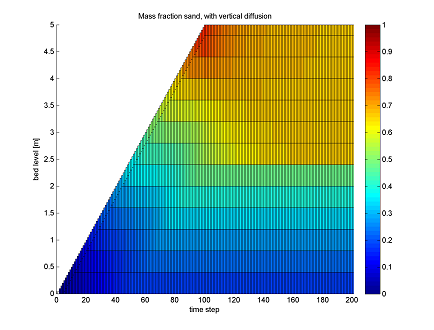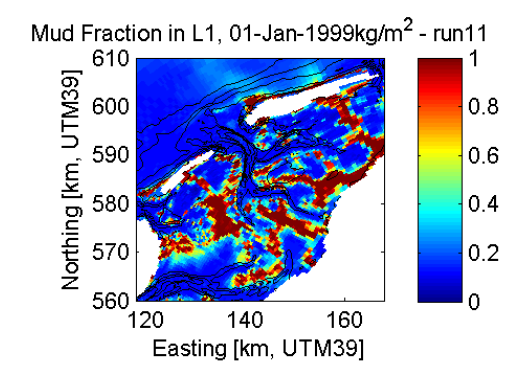Practical Applications
On 29 June 2012, an international workshop was organised in Delft to disseminate the knowledge on and promote the use of the bed module within the communities of Building with Nature, NCK (Netherlands Centre for Coastal Research) and PACE (a German-Dutch science project on the fine sediment dynamics in the Wadden Sea).


The tool was developed and tested within the framework of the first project. Apart from idealised 1-D tests (top figure), it has been applied to fine sediment transport models of the Dutch coastal zone and the Wadden Sea. Maps of computed bed compositions have been used as input to habitat evaluations (lower figure). After proper calibration, observed gradients in bed composition can be reproduced. Quantitative results from studies on biota-mud interactions are planned to be included in the bed module. The development of the Wadden Sea model will continue in the framework of the PACE (NWO GeoRisk) project.
These applications have demonstrated the need for sufficient field data on the actual bed composition in the systems considered. Without such data, the bed module application lacks validation and the predicted response to changes in forcing or sediment supply remains uncertain. So a proper field survey of a potential project site is essential. Although present experience with the sand-mud bed module is limited to shallow shelf seas and intertidal areas, it can also be applied in different environments such as rivers, lakes and deep seas.
